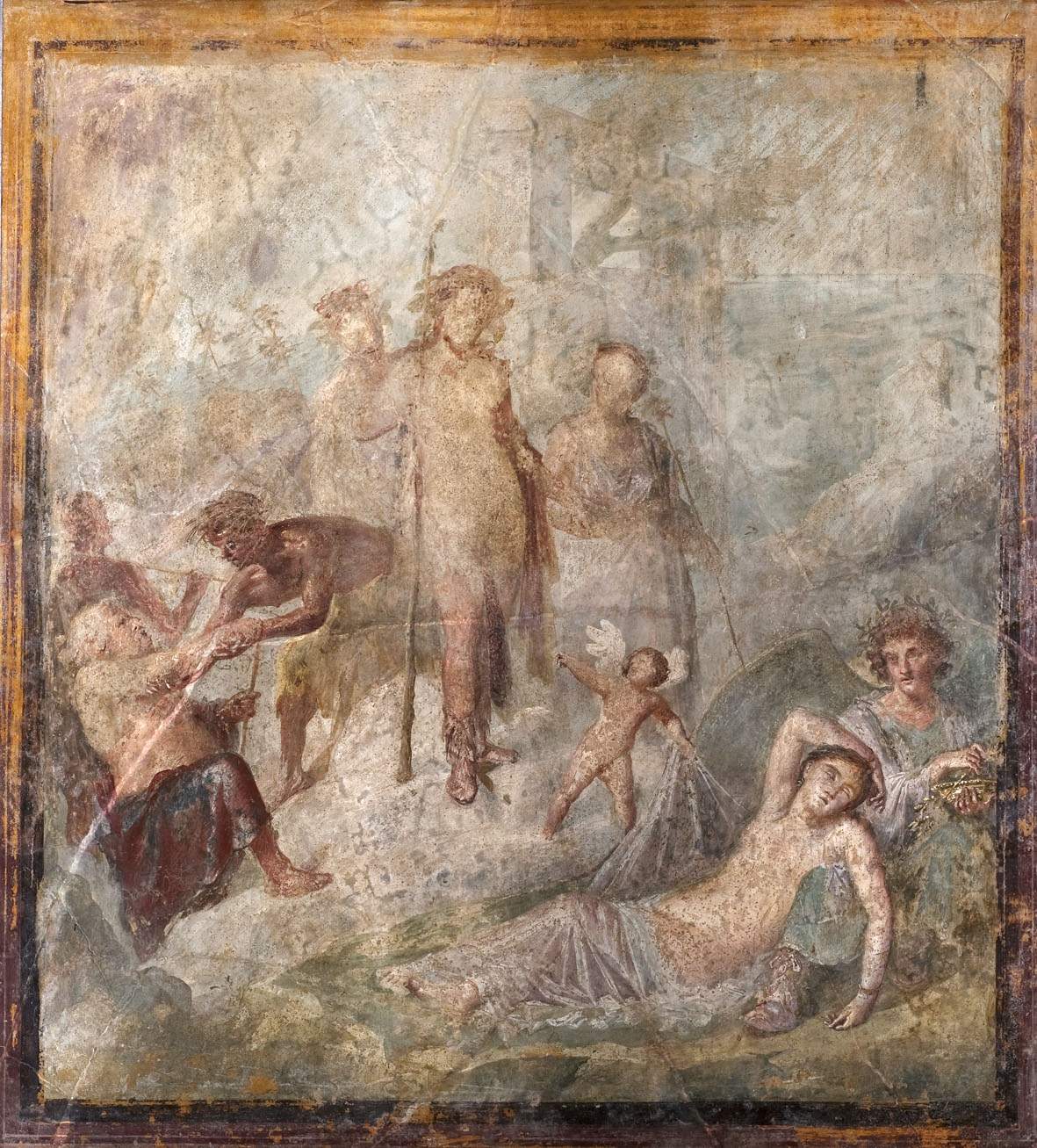From February 10 to May 21, 2023, the Civic Archaeological Museum of Cremona, in collaboration with the Superintendence of Territory, offers at the Violin Museum, the exhibition Pictura Tacitum poema. Myths and Painted Landscapes in the Domus of Cremona curated by Nicoletta Cecchini, Elena Mariani, and Marina Volonté, an exhibition dedicated to the frescoes of the Roman domus of the city and its surroundings. The title refers to the famous phrase attributed to Cicero “Si poema loquens pictura est, pictura tacitum poema esse debet” (“if poetry is a speaking painting, painting must be a silent poem”). This is an exhibition that intends to display the stories beautifully told on the walls of the rich Cremonese residences, torn apart by the violence of the Battle of Cremona in 69 A.D. and blackened by fires, Witnessed by thousands upon thousands of fragments that re-emerged, a twenty-year period ago, from underground. These are fragments recovered, catalogued, partly restored and, as far as possible, reconnected, and now displayed with the idea of rediscovering the frescoed scenes that embellished the Cremonese domus.
Key pieces include the stories painted in the “Room of Ariadne” from the Nymphaeum Domus. The three large frescoes from the Augustan period recount as many moments in the Cretan myth: first abandoned by Theseus after the feat of killing the Minotaur, later discovered by Dionysus asleep on the beach of the island of Naxos, Ariadne finally appears as the triumphant bride of the god himself. The paintings found in the 2002 excavations in Marconi Square, and in subsequent ones, testify to a refined artistic culture and, together, the many stories of the house and the passions of its owners. Alongside the theme of Ariadne, the Cremonese frescoes hark back to those of the cult of the Lares and highlight a taste for Egypt, both themes well represented in the frescoes of the Domus of Golden Candelabra, another sumptuous Cremonese residence covered by the exhibition. The lararium painted on the walls of this domus is joined in the exhibition by precious votive bronzes from the Archaeological Museum of Mantua, and Lari from that of Ostia along with a painting with the same subject from Pompeii. Likewise, the Cremonese frieze with dwarfs and pygmies is compared to a similar depiction from Ostia. The representations of Nilotic taste tell us how, even in ancient times, the fascination with Egyptian civilization had a wide following. Here, too, an important comparison with Egyptian finds granted by the Florence Archaeological Museum.
Like the Pompeian frescoes on loan from the National Archaeological Museum in Naples, they offer a visual comparison on the Myth of Ariadne. On the same theme, the splendid sarcophagus lid from the Villa d’Este in Tivoli and a Renaissance head of sleeping Ariadne, from Florence. Completing this exhibition are the immersive reconstruction of the Room of Ariadne and a series of video stations documenting the events of the excavation in Roman Cremona and the restoration and research work that was conducted on the finds by the Center for Conservation and Restoration of “La Venaria Reale” and the Arvedi Laboratory of the University of Pavia. The natural complement to the exhibition set up at the Violin Museum is offered in the Archaeological Museum in San Lorenzo.
For all information you can visit the website of the Violin Museum.
Image: Apparition of Dionysus to Ariadne (1st century AD; from Pompeii, House of the Colored Capitals or House of Ariadne; fresco; Naples, National Archaeological Museum)
 |
| Cremona showcases frescoes from Roman domus in the area and beyond |
Warning: the translation into English of the original Italian article was created using automatic tools. We undertake to review all articles, but we do not guarantee the total absence of inaccuracies in the translation due to the program. You can find the original by clicking on the ITA button. If you find any mistake,please contact us.